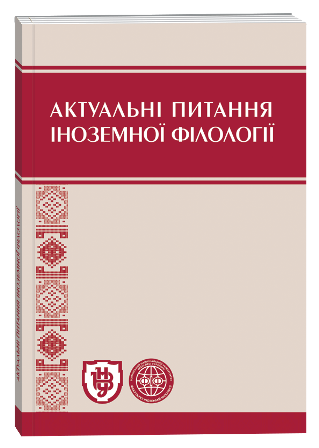“RESURRECTION” OF THE SUBJECT IN ENGLISH POST-POSTMODERNISTIC NOVEL: PECULIARITIES OF (POST)REALISTIC REPRESENTATION OF SOCIAL ISSUES
Keywords:
post-postmodernism, contemporary English novel, social science fiction, (post)realism, post-truth, dystopia, mystery, carnivalAbstract
In the paper, the author has outlined the representation of social problems in English post-postmodernistic novel. It is found out that in post-postmodernism there is a return of the subject who retells personal stories related to the experience of injuries, pain, describing the situation of an existential choice. It has been analyzed that characters reveal the need for existential truth, which opposes the discourse of the post- truth. It is discovered that the accentuation on the personal component in the post-postmodernistic novel determines his particular sensuality and understanding of social conflicts and crises in terms of philosophy, psychology and medicine (human biology). On the material of D. Mitchell’s “Cloud Atlas” the specificity of dystopia in post-postmodernistic novel has been investigated. Dystopia is a genre type of social science fiction, in which there is a criticism of social system, political institutions, ideological lack of freedom, etc. It was investigated that English post-postmodernistic novel is open to representing social issues that were not exploited in postmodernism. The interaction of realistic and fictional in contemporary British novels has been analyzed. The features of (post)realism as one of the stylistic parameters of post-postmodernism are found out. A complex of social problems and motives, which find a critical understanding in English post-postodernistic novel, has been spotlighted.
References
Hailend, M. Dzh. 2008. Uhamuite mene. Lviv: Kalvariia.
Heddon, Mark. 2016. Zahadkovyi nichnyi intsydent iz sobakoiu. Kharkiv: KSD.
Johnston, Jennifer. 1983. Daleko li do Vavilona? Staraya shutka. Moskva: Hudogestvennaya literatura.
Krasavchenko, Tatyana. 2010. “Angliyskaya proza: novoe dyihanie”. Literaturnaya gazeta 4(55): 3.
Lebid, Andrii. 2014. “Paradyhma realizmu ta teorii istyny”. Liudynoznavchi studii. Drohobych. 30:129–143.
Makyuen, Ian. 1998. Amsterdam. Moskva: “FTM”, “Eksmo”,
Makiuen, Ian. 2008. Spokuta. Lviv: Kalvariia.
Makiuen, Ian. 2007. Subota. Lviv: Kalvariia.
Nalyvaiko, Dmytro. 2008. “Zamitky shchodo henezy y typolohii sotsialistychnoho realizmu”. Slovo i Chas 9: 46–52.
Nalyvaiko, Dmytro. 2006. Teoriia literatury y komparatyvistyka. Kyiv: “Kyievo-Mohylianska akademiia”.
Perelomova, O. S. 2011. “Deiaki osoblyvosti realizmu v ukrainskomu khudozhno-literaturnomu dyskursi”. Visnyk Kharkivskoho natsionalnoho universytetu imeni V. N. Karazina 940(42):12–114.
“Politika postpravdyi v sovremennom mire”. 2017. Sbornik materialov po itogam Vserossiyskoy nauchnoy konferentsii s mejdunarodnyim uchastiem “Politika postpravdyi i populizm v sovremennom mire”. SPb.: Skifiya-print.
Kharkhun, Valentyna. 2009. “Dva sotsrealizmy”, abo Problema interpretatsii “osnovnoho metodu radianskoho mystetstva”. Naukovi zapysky Kirovohradskoho derzhavnoho pedahohichnoho universytetu imeni Volodymyra Vynnychenka 85: 391–399.
Shalahinov, Borys. 2011. “Karnaval i misteriia: rozdumy pro istorychni doli dvokh metaform yevropeiskoho mystetstva”. Vsesvit 3–4: 249–255.
Shalahinov, Borys. 2013. Klasyky i romantyky: Shtudii z istorii nimetskoi literatury XVIII-XIX stolit. Kyiv: Kyievo-Mohylianska akademiia.
Haddon, Mark. 2004. The Curious Incident of the Dog in the Night-Time. London: Vintage.
Loftis, Sonya Freeman. 2015. Imagining Autism: Fiction and Stereotypes on the Spectrum. Indiana University Press.
McEwan, Ian. 2006. Saturday. London: Vintage.
Mitchell, David. 2004. Cloud Atlas. London: Random House.







